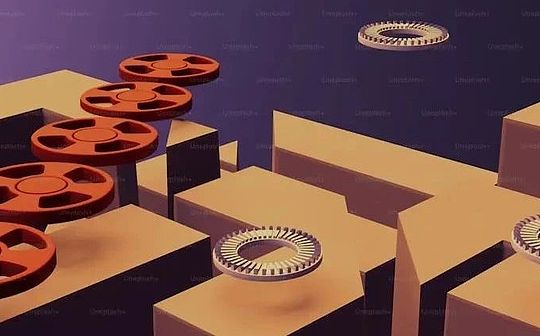
I think Web3 is a shift in the game paradigm.Although I’m not the only one who thinks so, not many of us have spent more than 30 years professionally making games!
Why are experienced game developers so suspicious?Part of the reason is that its benefits are not obvious, and to be honest, they are often over-promoted and difficult to implement.The blockchain world is incredibly growing at a pace that few people are good at explaining what it actually brings to game design.
So why do I think this is a huge shift similar to 3D, online multiplayer or free mobile games?Here are some early ideas that caught my attention…
Interoperability
A fundamental difference between Web2 and Web3 games is that in Web3 games, ownership of game assets is recorded on the blockchain, rather than in a closed centralized database controlled by the game manufacturer, which allows players to buy and sell assets.It also allows other games to see which game assets the player has.
Interoperability is the asset that uses one game in another gameidea.The second game doesn’t have to be made by the same person, and it doesn’t even require the first person to make a request.Actually, I don’t think that means the gun in Game 1 can be used in Game 2, but the idea can be used in a more creative way.
Those who play Game 1 can now choose the way they like: Play More Game 1 or complete levels in Game 2.
Game 1 is a placement mining game; Game 2 is a tower defense game.Game 2 decides to power the tower by using iridium in mining games; Game 1 decides to double the idle returns by accepting the stars you win by completing levels in Game 2.Anyone who plays Game 1 can now choose the way they like, by playing more Game 1 or completing levels in Game 2, two matches begin until one of the parties decides to cut off the power.It creates a richer game,Because there are now multiple game loops and multiple options for players to choose from.This example describes a pair of games, but there is no reason that 20 games cannot interoperate.
Apart from being an interesting idea for game mechanics, it is also a great user acquisition tool that allows players who have invested in one game to use that investment in another.
Our game The Crypt uses interoperability.We use Loot NFT as a game block.We also bring the output of other Loot games to The Crypt.By using a combination of these, players can make progress in the game.The NFTs we win in the game can in turn be used in other people’s games.
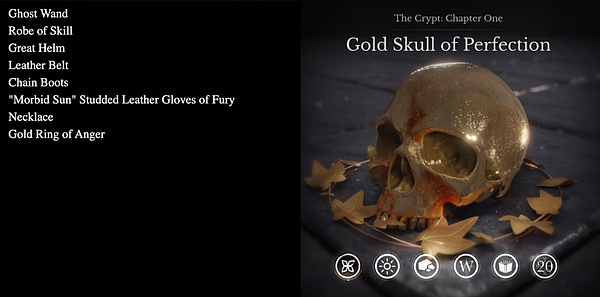
The original Loot NFT (left), available in The Crypt, and one of our NFTs (right), available to win by playing the game
Compositionality
Most blockchain games only retain their game assets on the chain.This is a great use case, but missed some of the opportunities that are available to build game logic on the chain.By putting the game logic on the chain, others can freely build on top of the game without permission.
The obvious first step is the robot.Since the game logic is on-chain, the code can freely interact with the game logic without using the game interface.Robots have a bad reputation, but it is possible to design a game that expects robots to appear.In our first game, we have had a fight between humans and robots, which is fun for the participants.
Robots have a bad reputation, but it is possible to design a game that expects robots to appear.
Some more interesting ideas emerged after the robot.Anyone can write a dashboard to track the price of resources in the game, they can build a market for game assets, they can create a DAO to bring together guild resources and optimize them.They can decide to abandon the game maker’s game client and build a mobile version, (when the rights allow) they can sell freely on the app store.Justin Glibert calls it“Customer Agnosticism”.
Apart from this is an unknown area.If the rules of the game are stored on the chain, other game makers can build their own games on it, just like DOTA is built on Warcraft 3 while adhering to the underlying game rules.Through a tokenized economy, a vault controlled by DAOs and smart contracts, these new games can be incentivized through grants and token-split business models.
The best example of composability in a game is Dark Forest, which has emerged many emerging gameplay by encouraging builders to build on it.
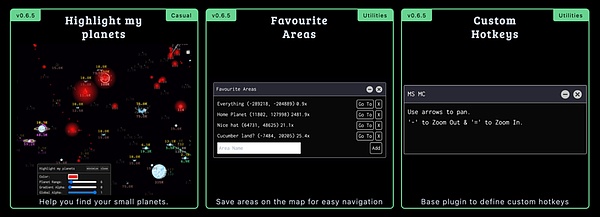
Featured Dark Forest plugin from plugins.zkga.me
No permission required
One of my favorite games is StarCraft 2.If I wanted to make a game in the StarCraft universe, I had to know who to call Blizzard, have enough credibility to get them answered, sign a confidentiality agreement, attend a meeting with unfriendly phone number time zones,Then if everything goes well, hire a group of lawyers to make a business agreement.After that, I need to take the time to make sure we adhere to the Art Bible and align with the norms.If the game is directly related to StarCraft 2, then I’ll have a continuous conversation between the CTOs, discussing the nature of the API specification and encouraging them not to change it.
No one needs to ask for permission from anyone.
Web3 breaks all this because NFTs and smart contracts can be used without permission.No one needs to ask for permission from anyone.This influences game design by allowing developers to create an organic cinematic universe around the game, especially if the original work follows the CC0 protocol (i.e., Creative Commons Zero), it is becoming a de facto choice for Web3 projects.It feels like tight controls in Web2 are making way for community-affected projects in Web3.

Zero Creative Commons (CC0) Encourages others to develop on the basis of your work
Inspire players
In 2007, Youtube launched their Partner Program, which distributes advertising revenue to Youtube and popular content creators at 50/50.The result is content creators go out of their way to try to create videos that appeal to those viewers.It creates a perfect symbiotic relationship between consumers, content creators, and Youtube itself.It turns out that economic motivations have brought boosters to Youtube, leaving Vimeo and other companies out of reach.I see the same thing happening in the game.
Of course I would rather give money to players than spend it on effect marketing.
Letting the tokens flow through the vault and then flow to the players according to set standards gives game designers the opportunity to inspire behaviors they wish to see.This could be anything that players create content for other players, entertain them, manage them, do chores, community work, or anything that the game maker thinks might be valuable.I hope this idea can be extended to marketing,Give players motivation to do things that attract more players to participate, of course I would rather give players money than spend money on effect marketing.
Governance as a metagame
When revenue comes from Web3 games, it usually goes into the game’s maker’s bank account, but into the game’s vault.There, some tokens are allocated to game makers, some are allocated to players, some are allocated to communities, some are allocated to liquidity pool providers, etc.The allocation of these tokens is usually (partially) organized by people holding the game governance tokens.
Web3 Game Vault is not just a boring management feature, I think it should be considered part of the game as well.Some “players” may hold tokens because they can play “simulator game makers” and work with the development team to help manage the long-term sustainability of the game and decide which community projects are funded, although maybe they never playReal game.
Asymmetric gameplay
When I play Elden Ring, I play a series of fixed clips, and I’m going through a gamer’s journey carefully planned by the game maker.When I played Zelda, I was free to deviate from the route, but eventually I needed to go through the dungeon to reach Cannondorf.
Game designers who tend to this have the opportunity to build games that cater to a wider range of player types.
Web3 games provide players with a variety of different ways to play.Some players’ gaming experiences will be honed, upgraded and sold to players who are unwilling to spend time.Some people will never get involved in games, but invest in tokens for games like investments in company stocks.Some will become a probable developer, organize DAOs and make decisions on behalf of the vault.Some people will look for arbitrage opportunities in the game.Some people spend a lot of money to collect NFTs and become leaders in in-game guilds.
I recognize that many existing games try to provide different characters for different players, but Web3 promotes character asymmetry between inside and outside the game by default.Game designers who tend to this have the opportunity to build games that cater to a wider range of player types.
Persistence
Smart contracts exist on the blockchain, which can be immutable or upgradeable.When the game exists on the chain as an immutable smart contract, the game logic is always unchanged, and the continuous computing and storage costs are paid by the person who wants to use it in the form of a gas fee.When the keys to the upgrade contract are destroyed, decentralization provides persistence beyond the whim of the creator.The game becomes permanent.
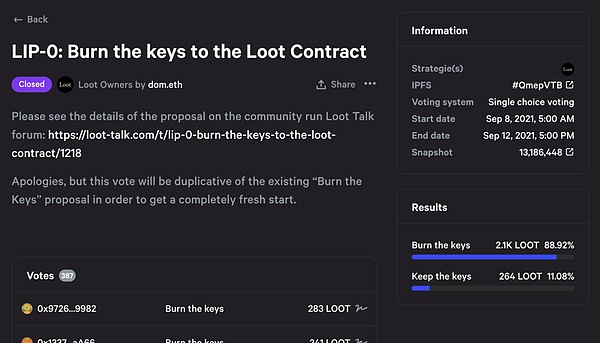
Loot DAOSnapshotVoting to destroy the key of the original Loot contract
This itself did not create new game mechanics, but it changed the motivations of game makers, they are confident that they will build around the core part of the game logic and are confident that the game logic will never change or disappear.
Play to earn (owned?)
I put this problem at the end of the list because it may cause as many problems as it solves.That is to say, the ability of players to make money has introduced a new group of gamers, and for them, earning pocket money by playing games is a unique gameplay.I wouldn’t underestimate the community awareness created by the skills of how players exchange how to make money, perhaps different from the participating audience you might find in the coupon trading forum.
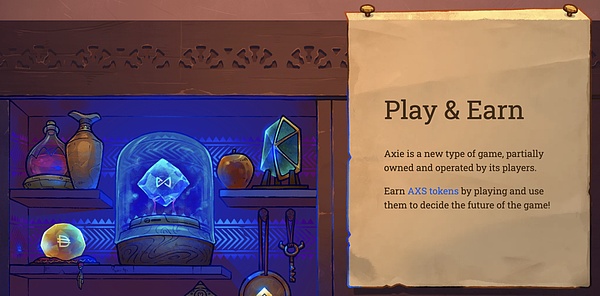
Axie Infinity describes itself as a “play-making” game
I once asked Axie players whether to make fun or to make money, but I began to think that this question was full of Western First World prejudice.I guess whether we consider “game play” or not, a large proportion of viewers who make money while playing have a lot of fun.
unknown
I’ve been working in the blockchain gaming space for about a year and most of the game design ideas offered by blockchain have become significant over the past six months.
When I moved from console development to free mobile games ten years ago, I mistakenly thought I should migrate PlayStation games to mobile devices, but looking back at the shared DNA between console and mobile devices is much less than I originally thought.So far, most blockchain games have been created by adapting Web2 games, resulting in Web2.5 games.Games that can define the Web3 type have not been built yet.
Original link: https://playmint.com/game-design-ideas-from-web3








